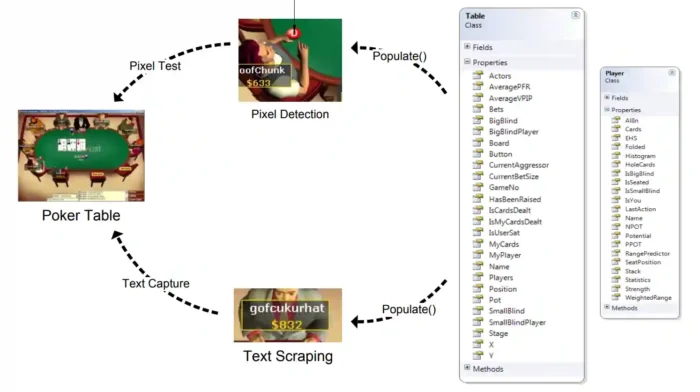I looked into some old research on poker AI, but after a long day and a few beers, my brain is a little fuzzy. Anyway, I read this article about AI for Texas Hold’em, and it made me think about how we can train machines to bluff better than the average Joe.
First and foremost, poker is more than just a card game. It’s a magical combination of statistics, psychology, and a touch of voodoo. Have you ever tried to guess if the player across the table will raise or fold? It’s like guessing what my cat wants for dinner: impossible. So, naturally, we turn to artificial intelligence to help us make sense of this pandemonium.
Now, developing a poker AI is similar to teaching a toddler to play chess, but with more snacks and less screaming (typically). Start with the basics: educate it to recognize strong hands. However, poker differs from chess in that it involves randomization and participants do not reveal their cards to the public. You need your AI to deal with incomplete information, make educated predictions, and not look foolish when someone pulls a quick one.
Assume you have this hand: A♣ Q♥. The flop shows up: 3♦ 4♠ J♥. Your AI must figure out, “What are the chances this hand is any good?” It’s like determining whether the leftover pizza is still safe to eat after a week in the fridge. Spoiler: it probably isn’t, and your AI has a ~58.5% chance of being correct. However, when the number of players increases, the odds decrease faster than your WiFi during a critical Zoom call. Against five opponents, your fancy A-Q may only win ~6.9% of the time. Ouch.
Then there’s the concept of “potential” – for example, your current hand may be bad, but with a little luck, it may transform into a royal flush. It’s like wagering that your startup will succeed despite the odds. Consider holding 6♦ 7♦ with a flop of 5♦ A♠ 8♦. Does it not look good? However, with the perfect turn and river, you may be sitting on a straight flush. Suddenly, your AI must go from “I’m screwed” to “I might just win this!”
But first, let’s talk about the opponents, because poker isn’t like solitaire. Your AI must model opponents’ behavior, determining whether they are playing tight or loose, aggressively or passively. It’s like trying to predict if your neighbor will return your lawnmower on time or not. The AI employs neural networks, Bayesian methods, and even something called particle filtering (whatever that is). I suppose it’s like sprinkling some magic dust to predict your opponent’s future move.
To make things even cooler, the AI creates game trees that simulate all conceivable outcomes. It’s like planning every conceivable conversation you may have with your employer – it’s useful but exhausting. These trees assist the AI in making the optimal decisions by calculating the value of each action. Raise, fold, and call – it’s all laid out.
Finally, the goal is to make AI smarter and more adaptive. It learns from millions of hands and becomes a poker master. It’s like seeing your child suddenly improve at video games after hours of practice. Or, say, your cat has finally mastered the art of knocking items off the table just perfectly.

Look at this figure. The chart displays VPIP (Voluntarily Put Money In Pot) values for each player cluster. It’s a clever way of expressing, “Who’s the sucker that’s always betting?” It turns out that the smaller the stakes, the more people want to see the flop, as if everyone is a dreamer hoping for a miracle river card.
Thus, developing a poker bot is not an easy task. It’s more akin to running a marathon with a fresh math problem handed to you every mile. But what fun is it to see it outsmart humans or pull off cunning moves? Prceless.. Just remember to give your AI quality data (we have billions of these hm2 files), just like you would with a cat: avoid giving it too much at once and steer clear of anything that might come back to bite you.
